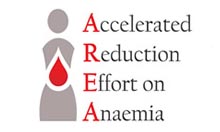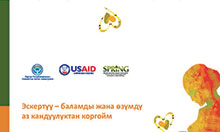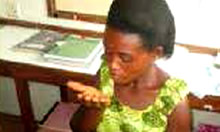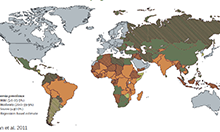Background
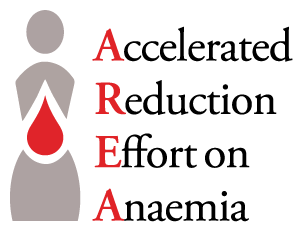
Iron supplementation to prevent and control iron deficiency and iron deficiency anaemia is recommended by the World Health Organization across different life stages. WHO guidelines provide these recommendations by specific interventions, not as a set of recommendations across the life stages. Therefore the purpose of the summary table is to provide AREA members with an overview of all the current WHO iron supplementation recommendations by life stage (target population) and underlying prevalence of anemia. The table provides the dose, duration, and frequency of iron as well as any accompanying folic acid recommendations, if existing. All data were accessed from the guidelines posted on the WHO website. The link to the online guideline is provided, as well as the language used in the summary recommendation. Regularly reviewed, these can and have changed over time, with each new guideline superseding previous versions for the same sub-population. Although this table will be regularly updated, this version is current to December 2017.
Please note: Haemoglobin concentrations should be measured prior to the start of supplementation to confirm non-anaemic status, for all anaemic individuals follow the national guidelines for the treatment of anaemia.
Jump to: Children | Women of Reproductive Age & Adolescents | Post Partum Women | Pregnant Women | Adolescent Boys
Children | ||||
|---|---|---|---|---|
| Setting (Country Prevalence of Anaemia in Target Population) | Elemental Iron Recommended Dose (where as per latest guidance 60 mg of elemental iron is 300 mg of ferrous sulfate hepahydrate, 180 mg of ferrous fumarate or 500 mg of ferrous gluconate) | Duration | Frequency | Current Guidelines (Year, Citation with Link) |
Women of Reproductive Age & Adolescents | ||||
| Setting (Country Prevalence of Anaemia in Target Population) | Elemental Iron Recommended Dose (where as per latest guidance 60 mg of elemental iron is 300 mg of ferrous sulfate hepahydrate, 180 mg of ferrous fumarate or 500 mg of ferrous gluconate) | Duration | Frequency | Current Guidelines (Year, Citation with Link) |
Post Partum Women | ||||
| Setting (Country Prevalence of Anaemia in Target Population) | Elemental Iron Recommended Dose (where as per latest guidance 60 mg of elemental iron is 300 mg of ferrous sulfate hepahydrate, 180 mg of ferrous fumarate or 500 mg of ferrous gluconate) | Duration | Frequency | Current Guidelines (Year, Citation with Link) |
Pregnant Women | ||||
| Setting (Country Prevalence of Anaemia in Target Population) | Elemental Iron Recommended Dose (where as per latest guidance 60 mg of elemental iron is 300 mg of ferrous sulfate hepahydrate, 180 mg of ferrous fumarate or 500 mg of ferrous gluconate) | Duration | Frequency | Current Guidelines (Year, Citation with Link) |
Adolescent Boys | ||||
| Setting (Country Prevalence of Anaemia in Target Population) | Elemental Iron Recommended Dose (where as per latest guidance 60 mg of elemental iron is 300 mg of ferrous sulfate hepahydrate, 180 mg of ferrous fumarate or 500 mg of ferrous gluconate) | Duration | Frequency | Current Guidelines (Year, Citation with Link) |
| ≥20% | 10 to 12.5 mg of elemental iron for children 6 months–4 years 12.5 to 30 mg elemental iron for children aged 5–12 years | Throughout childhood from 6 months to 12 years of age | 90 sachets/doses over a 6-month period | 2016 Guideline: Use of multiple micronutrient powders for point-of-use fortification of foods consumed by infants and young children aged 6–23 months and children aged 2–12 years |
Read moreFolic Acid Recommended Dose (if applicable)Does not specifically identify folic acid, however, states that MNP can be formulated with or without other vitamins and minerals in addition to iron, vitamin A and zinc, to achieve 100% of the RNI, and also taking into consideration the technical and sensory properties. Where feasible, likely consumption from other sources, including home diet and fortified foods, should be taken into consideration for establishing the composition of the sachet. Recommendation language (and purpose highlighted)1. In populations where anaemia is a public health problem, point-of-use fortification of complementary foods with iron-containing micronutrient powders in infants and young children aged 6–23 months is recommended, to improve iron status and reduce anaemia (strong recommendation, moderate-quality evidence). NotesFor children aged 6-23 months the guideline supersedes the 2011 WHO. Guideline: Use of multiple micronutrient powders for home fortification of foods consumed by infants and children 6–23 months of age. Geneva, World Health Organization, 2011. It provides new recommendations for children aged 2–12 years. Notable changes: Dosage now a range of 10-12.5mg versus prior recommendations stated 12.5 mg. Also states caution on use of NaFe EDTA for children 6-12 months, avoiding its use otherwise EDTA intake (including other dietary sources) should not exceed 1.9 mg EDTA/kg/day. | ||||
| 20-40% | 24-59 mths: 25 mg (drops/syrups) 5-12 yrs: 45 mg (tablets) | 3 months of supplementation followed by 3 months of no supplementation after which the provision of supplements should restart | Weekly | 2011 WHO. Guideline: Intermittent iron supplementation in preschool and school-age children. Geneva, World Health Organization, 2011 |
Read moreFolic Acid Recommended Dose (if applicable)As there is limited evidence for the effective dose of folic acid or other vitamins and minerals for intermittent supplementation, it is suggested providing two times the recommended nutrient intake in these age groups without exceeding the daily upper limit. Thus children 24–59 months of age may be given a dose of 300 µg (0.3 mg) of folic acid once a week, whereas older children may be given 400 µg (0.4 mg). Recommendation language (and purpose highlighted)In settings where the prevalence of anaemia in preschool or school-age children is 20% or higher, intermittent use of iron supplements is recommended as a public health intervention to improve iron status and reduce the risk of anaemia among children (strong recommendation). | ||||
| ≥40% | 6-23 mths: 10-12.5 mg, 24-59 mths: 30 mg ≥60 mths: 30-60 mg | Three consecutive months in a year | Daily | 2016 Guideline: Daily iron supplementation in infants and children. Geneva: World Health Organization; 2016. |
Read moreFolic Acid Recommended Dose (if applicable)Not mentioned Recommendation language (and purpose highlighted)Daily iron supplementation is recommended as a public health intervention in infants and young children aged 6–23 months, living in settings where anaemia is highly prevalent, for preventing iron deficiency and anaemia (strong recommendation, moderate quality of evidence). Daily iron supplementation is recommended as a public health intervention in preschool-age children aged 24–59 months, living in settings where anaemia is highly prevalent, for increasing haemoglobin concentrations and improving iron status (strong recommendation, very low quality of evidence).Daily iron supplementation is recommended as a public health intervention in school-age children aged 60 months and older, living in settings where anaemia is highly prevalent, for preventing iron deficiency and anaemia (strong recommendation, high quality of evidence). In malaria-endemic areas, the provision of iron supplementation in infants and children should be done in conjunction with public health measures to prevent, diagnose and treat malaria (strong recommendation, high quality of evidence). NotesThe recommendations around iron supplementation in malaria-endemic settings haven't changed- the guidelines continue to say to implement malaria control measures in conjunction with iron supplementation. Perhaps new are these more nuanced statements with regard to malaria:
| ||||
| 20-40% | 60 mg | 3 months of supplementation followed by 3 months of no supplementation after which the provision of supplements should restart. | Weekly | 2011 WHO. Guideline: Intermittent iron and folic acid supplementation in menstruating women. Geneva, World Health Organization, 2011. |
Read moreFolic Acid Recommended Dose (if applicable)2800 μg (2.8 mg) Recommendation language (and purpose highlighted)Intermittent iron and folic acid supplementation is recommended as a public health intervention in menstruating women living in settings where anaemia is highly prevalent, to improve their haemoglobin concentrations and iron status and reduce the risk of anaemia (strong recommendation). NotesNew recommendation (not replacing another) See also WHO. Weekly iron–folic acid supplementation (WIFS) in women of reproductive age: its role in promoting optimal maternal and child health. Position statement. Geneva, World Health Organization, 2009 (http://www.who.int/nutrition/publications/micronutrients/weekly_iron_folicacid.pdf,) | ||||
| ≥40% | 30-60 mg | Three consecutive months in a year | Daily | 2016 Guideline: Daily iron supplementation in adult women and adolescent girls. Geneva: World Health Organization; 2016. |
Read moreFolic Acid Recommended Dose (if applicable)Not included only note that if they plan to conceive, women should switch to antenatal IFA Recommendation language (and purpose highlighted)Daily iron supplementation is recommended as a public health intervention in menstruating adult women and adolescent girls, living in settings where anaemia is highly prevalent (≥40% anaemia prevalence), for the prevention of anaemia and iron deficiency (strong recommendation, moderate quality of evidence). NotesSupercedes 2001 guidance for women of childbearing age which indicates providing 60mg of iron and 400 mcg of folic acid per day for 3 months in areas where prevalence is greater than 40%. See Iron deficiency anaemia: assessment, prevention and control. A guide for programme managers. 2001, Geneva: World Health Organization; 2001 (WHO/NHD/01.3; http://apps.who.int/iris/bitstream/10665/66914/1/WHO_NHD_01.3.pdf). | ||||
| ≥20% gestational anaemia | follow guidelines on menstruating women or continue with pregnancy dosing | As soon as possible after delivery for 6-12 weeks, or until menses resume and guidelines revert to those for menstruating women | as per guidance selected | 2016 Guideline: Iron supplementation in postpartum women. Geneva: World Health Organization; 2016. |
Read moreFolic Acid Recommended Dose (if applicable)as per guidance selected (may be with or without folic acid); additionally says: In areas using sulfadoxine–pyrimethamine, high doses of folic acid should be avoided, as they may interfere with the efficacy of this antimalarial drug. Recommendation language (and purpose highlighted)Oral iron supplementation, either alone or in combination with folic acid supplementation, may be provided to postpartum women for 6–12 weeks following delivery for reducing the risk of anaemia in settings where gestational anaemia is of public health concern (conditional recommendation, low quality of evidence). NotesThe recommendation supersedes the previous WHO recommendation on iron supplementation in postpartum women which indicates continuation of pregancy dosing of 60 mg iron and 400 mcg folic acid for 3 months post partum where anaemia prevalence is ≥40% (Iron deficiency anaemia: assessment, prevention and control. A guide for programme managers. 2001, Geneva: World Health Organization; 2001 (WHO/NHD/01.3; http://apps.who.int/iris/bitstream/10665/66914/1/WHO_NHD_01.3.pdf). | ||||
| All settings | 30-60 mg Where prevalence ≥40%, a daily dose of 60 mg of elemental iron is preferred over a lower dose | Throughout pregnancy. Iron and folic acid supplementation should begin as early as possible | Daily | 2016 WHO recommendations on antenatal care for a positive pregnancy experience (2016) |
Read moreFolic Acid Recommended Dose (if applicable)400 µg (0.4 mg) Folic acid should be commenced as early as possible (ideally before conception) to prevent neural tube defects Recommendation language (and purpose highlighted)Recommendation A.1.1. Daily oral iron and folic acid supplementation with 30 mg to 60 mg of elemental iron and 400 g (0.4 mg) of folic acid is recommended for pregnant women to prevent maternal anaemia, puerperal sepsis, low birth weight, and preterm birth. NotesThis recommendation supersedes the 2012 WHO Guideline: daily iron and folic acid supplementation in pregnant women (36) and should be considered alongside Recommendation A.2.2 on intermittent iron. As per 2016 guidelines, due to lack of evidence, micronutrient powders are not recommended as an alternative to iron and folic acid supplemenation for pregnant women. WHO. Guideline: Use of multiple micronutrient powders for home fortification of foods consumed by pregnant women. Geneva, World Health Organization, 2016. http://apps.who.int/iris/bitstream/10665/44650/1/9789241502030_eng.pdf?ua=1&ua=1 If a woman is diagnosed with anaemia during pregnancy, her daily elemental iron should be increased to 120 mg until her Hb concentration rises to normal (Hb 110 g/L or higher). Thereafter, she can resume the standard daily antenatal iron dose to prevent recurrence of anaemia. | ||||
| <20% | 120 mg | Throughout pregnancy. Iron and folic acid supplementation should begin as early as possible | Weekly | 2016 WHO recommendations on antenatal care for a positive pregnancy experience (2016) |
Read moreFolic Acid Recommended Dose (if applicable)2800 μg (2.8 mg) Recommendation language (and purpose highlighted)Recommendation A.2.2. Intermittent oral iron and folic acid supplementation with 120 mg of elemental irona and 2800 μg (2.8 mg) of folic acid once weekly is recommended for pregnant women to improve maternal and neonatal outcomes if daily iron is not acceptable due to side effects, and in populations with an anaemia prevalence among pregnant women of less than 20%. (Context-specific recommendation) NotesThis recommendation supersedes the previous WHO recommendation in the 2012 Guideline: intermittent iron and folic acid supplementation in non-anaemic pregnant women (55) and should be considered alongside Recommendation A.1.1. If a woman is diagnosed with anaemia during pregnancy, her daily elemental iron should be increased to 120 mg until her Hb concentration rises to normal (Hb 110 g/L or higher). Thereafter, she can resume the standard daily antenatal iron dose to prevent recurrence of anaemia. | ||||
| ≥40% | 60 mg | 3 months | Daily | 2001: Iron deficiency anaemia: assessment, prevention and control. A guide for programme managers. 2001, Geneva: World Health Organization; WHO/NHD/01.3 |
Read moreFolic Acid Recommended Dose (if applicable)400 μg (0.4 mg) Recommendation language (and purpose highlighted)Where prevalence of anaemia in pubertal girls is severe (≥40%), preventive iron supplementation of 60 mg/day iron with 400 μg folic acid for 3 months should be considered. Adolescent boys should also receive preventive iron supplementation where prevalence of anaemia among them is severe (≥40%). As with adolescent girls, supplementation should continue throughout adolescence, following the same schedule of 60 mg/day iron with 400 μg folic acid for 3 months. Notes | ||||
Footnotes
Note: Draft produced by SPRING for the AREA CoP
